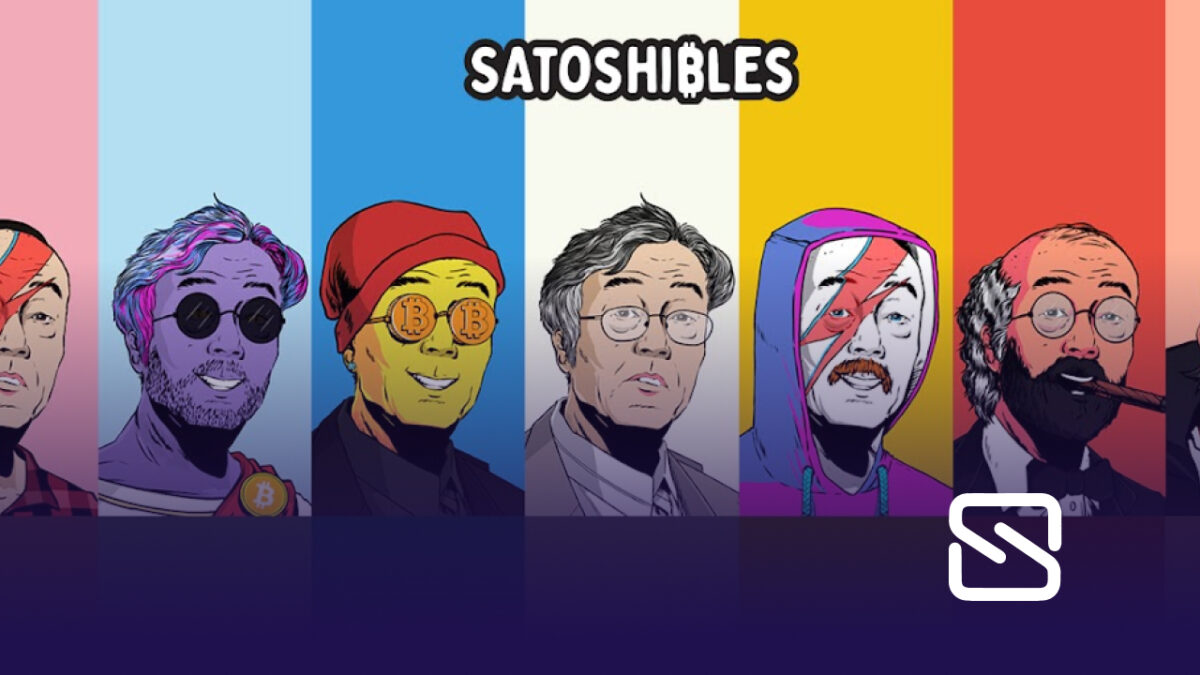NFTs gained popularity on the Bitcoin-backed Stacks network last fall, surprising many in the crypto sector. The booming market has given designers of Satoshibles a potential chance, an Ethereum-based NFT profile picture project, to properly integrate Bitcoin.
Satoshibles was named after the bitcoin creator, Satoshi Nakamoto. Created by Moroccan artist Ayyoub Bouzerda, the images are based on a photograph of Dorian Nakamoto, the man who became a Bitcoiner meme in 2014 after Newsweek claimed he was Satoshi.
“It was only right to create the NFTs on a platform that honored Satoshi’s legacy,” developer Brian Laughlan said
Satoshibles could have launched more NFTs on Stacks, but Laughlan claimed he didn’t want the community to be split up among multiple chains.
His team has alternatively began work on a cross-chain bridge that allows Satoshibles holders to move the NFT assets between Ethereum and Stacks. The StacksBridge, which is now live, allows Satoshibles owners to switch between blockchain platforms, and other NFT projects can use it to promote Stacks.
A Satoshibles NFT holder can connect to the bridge via a MetaMask Ethereum wallet and a Hiro Stacks wallet, and then pay transaction fees to effectuate the movement from one chain to the other.
On that platform, the Satoshibles team has already minted the new Stacks NFTs, so when a holder uses the bridge, it either locks or unlocks access to each version of the NFT, depending on which chain they choose to be active on. A Satoshibles NFT can only be active on one blockchain at a time, with access to the other platform being locked in the interim.
An NFT is a digital item’s deed of ownership, whether it’s a profile photo, digital graphic, video file, or other pieces of material.
Stacking NFTs on Bitcoin
Bitcoin lacks the ability to manage smart contracts, which are essential for NFT initiatives to function. This is a fundamental feature that distinguishes Ethereum from Bitcoin, and it’s one of the reasons why the NFT market has thrived on Ethereum, with additional platforms like Solana and Tezos emerging as well.
Stacks, on the other hand, has a solution. It’s a smart contract blockchain network that bundles transactions and settles them using Bitcoin transactions. It’s a layer-1 blockchain, but it works similarly to Ethereum’s layer-2 or sidechain solutions.
With smart contracts came NFTs, and a slew of early Stacks projects, including 12-year-old Abraham Finlay’s Bitcoin Birds, debuted last fall. There had already been Bitcoin-backed digital collectibles, such as the popular Rare Pepes from the Counterparty platform in 2016, but these must now be “wrapped” as a new Ethereum NFT in order to be traded. Stacks gave Laughlan the chance to put the Satoshibles collection of 5,000 randomly generated profile photographs on a more thematically relevant platform. Satoshibles also updated the backgrounds to include Bitcoin images in the Stacks versions that were coined for bridge users.
But, he added that there could be functional or technical advantages to being on Stacks.
He’s working on staking and gamification capabilities for Stacks, which would be extremely expensive to implement on Ethereum’s mainnet but should be considerably cheaper for users to interact with on Stacks. Bridging Satoshibles to Stacks can operate as a vault for long-term storage for users that regard Bitcoin as a more secure platform.
Laughlan wants users to be able to use their Satoshibles in the Ethereum ecosystem as well, as the Ethereum ecosystem matures and provides potential NFT-powered metaverse applications. Users with the StacksBridge have the option to use another blockchain network, and Laughlan said that this might happen in the future.
StacksBridge has just launched, and Laughlan estimates that around 4% of Satoshibles owners have already switched. As of this writing, the lowest Satoshibles NFT on Stacks (692 STX, or $1,169) is significantly more expensive than the least on Ethereum (0.2 ETH, or $641), however Ethereum currently offers a considerably larger range of rarity levels.
As the Stacks NFT ecosystem takes shape, particularly around the thematic hook of Bitcoin, Laughlan believes that the project will serve as a sort of Bitcoin equivalent of the Bored Ape Yacht Club: a popular avatar, yes, but also a status symbol.
Stacks also gives an entry point into the NFT scene for Bitcoin maximalists who wouldn’t touch ETH or transact on other blockchains.
“We’ve gotten a lot of Bitcoin lovers on board, and a lot of them are saying it’s their first NFT,” Laughlan said. “The only [bad] thing they stated to me was that they were irritated that they had to purchase it with Ethereum.”
They won’t have to anymore.
